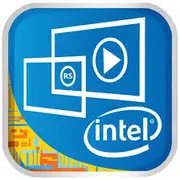Intel Core M-5Y31

인텔 코어 M-5Y31, 2025년: 제한된 작업을 위한 구식 칩
브로드웰 아키텍처, 14nm, TDP 4.5W — 이런 프로세서가 장착된 노트북을 구매할 가치가 있을까?
아키텍처와 공정: 성능보다 컴팩트함
2015년에 출시된 인텔 코어 M-5Y31 프로세서는 브로드웰 미세 아키텍처와 14nm 공정에 기반하고 있습니다. 이는 하이퍼 스레딩(4 스레드)을 지원하는 듀얼 코어 칩으로 기본 클럭은 0.9GHz입니다. 터보 모드에서는 클럭이 잠깐 2.4GHz까지 상승하지만, 제한된 TDP로 인해 지속시간이 짧습니다.
주요 특징:
- 그래픽: 24개의 실행 유닛과 최대 850MHz의 클럭을 가진 내장 iGPU 인텔 HD 그래픽스 5300. 4K 출력을 DisplayPort로 지원하지만, 현대 게임을 실행하기에는 적합하지 않습니다.
- 캐시: 4MB L3 캐시 — 2025년의 사무 작업을 감안해도 다소 부족합니다.
14nm 공정은 2025년에 5nm(애플 M2) 또는 3nm(AMD Zen 5) 칩들과 비교했을 때 구식으로 보입니다. 그러나 당시에는 액티브 쿨링 없이 울트라 슬림 노트북을 만드는 데 기여했습니다.
전력 소비와 TDP: 조용한 작동, 그러나 한계
TDP 4.5W는 코어 M-5Y31의 가장 큰 장점입니다. 낮은 열 방출 덕분에 이 칩은 다음과 같은 패시브 냉각 장치에서 사용됩니다:
- 2 인치 변환기 (예: Lenovo Yoga 3 Pro);
- 울트라북 (델 XPS 13 2015).
하지만 2025년에는 비슷한 TDP를 가진 더 성능이 좋은 프로세서들이 존재합니다. 예를 들어, 인텔 Alder Lake-Y(7W) 또는 AMD 라이젠 3 7320U(8W)가 그 예입니다.
성능: 기본 작업만 가능
Geekbench 6에 따르면, 이 칩은 단일 스레드에서 666점, 다중 스레드에서 1244점을 기록합니다. 비교를 위해, 예산형 인텔 N100(2023)은 1100/3300점을 기록합니다.
실제 시나리오:
- 사무 작업: Word, Excel, 5-10개 탭을 가진 브라우저 — 수용 가능하지만 Zoom을 동시에 실행할 때 약간의 지연이 발생할 수 있습니다.
- 멀티미디어: Full HD 비디오 감상(4K는 끊김), Shotcut에서 가벼운 편집 — 짧은 동영상만 가능.
- 게임: 낮은 설정에서 Minecraft(25-30 FPS), Stardew Valley — 안정적입니다. 현대의 AAA 타이틀은 실행할 수 없습니다.
터보 모드: 2.4GHz까지의 클럭은 10-20초 동안 활성화되며, 그 후에는 스로틀링이 시작됩니다. 게임에서는 FPS가 급격히 하락하는 결과를 초래합니다.
사용 시나리오: 2025년에 이 칩이 적합한 사람은 누구인가?
코어 M-5Y31은 두 가지 유형의 사용자에게만 적합합니다:
1. 학생 — 노트 필기, 웹 서핑 및 Netflix를 위한 용도.
2. 보조 장치 — 여행을 위한 소형 노트북.
부적합한 성격:
- 사진/비디오 편집(심지어 라이트룸에서도 긴 처리 시간);
- 프로그래밍(Android Studio, Docker);
- 멀티태스킹(10개 이상의 탭과 애플리케이션 동시 작업).
배터리 수명: 최대 8시간, 단 점이 있음
TDP 4.5W 덕분에 2025년에 코어 M-5Y31이 탑재된 노트북은 다음과 같은 조건에서 6-8시간 사용할 수 있습니다:
- 밝기 50%;
- 절전 모드;
- 활동: 브라우저, 문서, 음악.
전력 효율성 기술:
- 인텔 스피드스텝 — 주파수의 동적 변경;
- C-States — 사용하지 않는 코어 비활성화.
하지만, 비슷한 작동 시간 동안 현대의 프로세서(예: 애플 M1)는 두 배의 성능을 제공합니다.
경쟁 제품과 비교: 저가 모델과 비교해도 약함
- AMD 라이젠 3 7320U (4코어/8스레드, 8W): 다중 스레드에서 80% 향상, DDR5 지원.
- 애플 M1 (8코어, 10W): 렌더링에서 4배 더 빠르며, 배터리 수명은 15시간까지 가능.
- 인텔 N100 (4코어, 6W): 성능이 두 배 높고, 노트북 가격은 $250부터 시작.
결론: 코어 M-5Y31은 가장 저렴한 현대 칩과 비교해도 뒤처진다.
장단점
강점:
- 패시브 냉각 — 완전한 무소음;
- 초소형 사이즈 (두께 12mm 이상);
- 저렴한 가격 — $200부터 시작하는 노트북(2025년의 신규 모델, 만약 여전히 판매되고 있다면).
약점:
- 현대 운영 체제를 위한 낮은 성능 (Windows 11은 자원을 많이 요구함);
- 지속적인 부하 시 스로틀링 발생;
- 현대 표준(와이파이 6, PCIe 4.0) 미지원.
노트북 선택에 대한 권장 사항
2025년에 코어 M-5Y31이 장착된 장치를 고려하고 있다면 다음에 유의하십시오:
1. 저장장치 유형: SSD만 (NVMe가 SATA보다 우선).
2. RAM: 최소 8GB (4GB는 Windows 11에서 용납되지 않음).
3. 스크린: Full HD IPS — HD(1366×768)은 2025년에는 오피스 용도로도 구식임.
2025년 모델 예시(판매되는 경우):
- Chuwi Minibook X — 8GB/256GB, $220;
- Teclast F6 Pro — 12인치 화면, 8GB/512GB, $270.
중요! $300-400이면 인텔 N100 또는 AMD 라이젠 3 7320U가 장착된 노트북을 구매할 수 있으며, 이러한 기기들이 더 오래 사용할 수 있습니다.
최종 결론: 2025년에 코어 M-5Y31이 적합한 사람은 누구인가?
이 프로세서는 과거의 유물입니다. 다음과 같은 경우에만 고려할 가치가 있습니다:
- 비용 효율적인 노트북이 필요하며, 텍스트 작업과 YouTube를 위한 용도;
- 소음이 전혀 없는 것이 중요하다면(예: 강의 녹음을 위해).
주요 장점: 저렴함과 휴대성. 그러나 2025년에도 시장에는 보다 균형 잡힌 옵션이 제공됩니다. 코어 M-5Y31이 장착된 장치를 구매하기 전에 두 번 생각하세요 — 현대 칩에 더 많은 비용을 지불하는 것이 좋을 수 있습니다.
이 프로세서가 장착된 노트북을 $200 이하의 가격에 발견하고 제한 사항을 감수할 준비가 되어 있다면, 임시 해결책이 될 수 있습니다. 하지만 장기 사용을 원한다면 대안을 찾아보세요.
기초적인
CPU 사양
메모리 사양
GPU 사양
여러 가지 잡다한
벤치마크
다른 CPU와 비교
소셜 미디어에서 공유하기
또는 링크로 소개하기
<a href="https://cputronic.com/ko/cpu/intel-core-m-5y31" target="_blank">Intel Core M-5Y31</a>